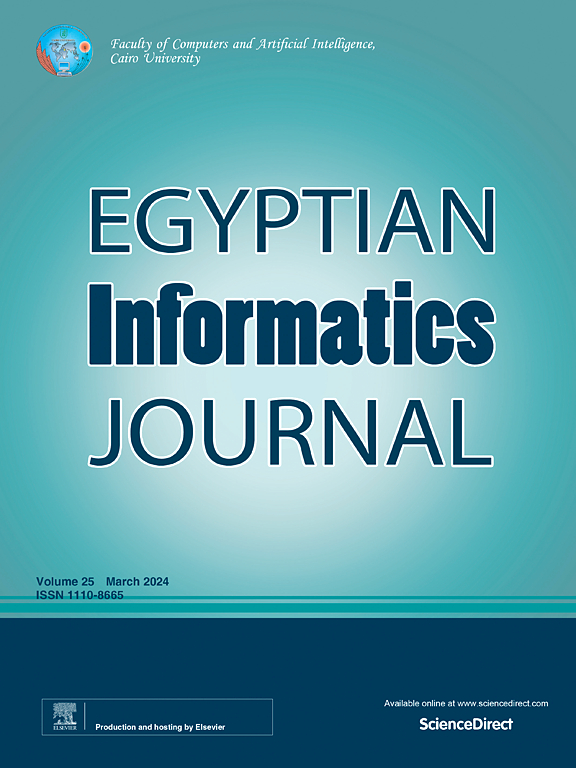A multi-objective fuzzy model based on enhanced artificial fish Swarm for multiple RNA sequences alignment
IF 4.3
3区 计算机科学
Q1 COMPUTER SCIENCE, ARTIFICIAL INTELLIGENCE
引用次数: 0
Abstract
Ribonucleic Acid (RNA) sequence alignment is a fundamental operation in bioinformatics, essential for analyzing the physicochemical and functional characteristics of RNA molecules. Traditional cross-alignment methods have significant challenges, particularly in optimizing multiple objectives during RNA sequencing. One of the biggest challenges is working to balance speed and accuracy. Fast methods are accompanied by low accuracy, unlike accurate methods which take a long computational time. Consequently, the alignment task becomes increasingly difficult as the number of RNA sequences grows, requiring tools that adequately handle these conflicting targets. To address these challenges, this study proposes an Enhanced Artificial Fish Swarm Algorithm (EAFSA) integrated with a fuzzy multi-objective model specifically designed for multiple RNA sequence alignment. The proposed EAFSA approach offers various advantages including significantly increased alignment accuracy, preservation of sequence integrity and the ability to search for similar fragments efficiently and quickly while reducing computational costs. Experimental comparisons of the proposed EAFSA with other relevant state-of-the-art alignment tools on benchmark RNA datasets demonstrate the efficiency of the proposed method. The efficiency is also proved by various metrics such as alignment score analysis, time complexity, and accuracy. This work demonstrates the potential of the proposed EAFSA to enhance RNA sequence alignment methods, facilitating additional biological interpretations through sequence alignment applications in genomics.
基于增强人工鱼群的多目标模糊模型多RNA序列比对
核糖核酸(RNA)序列比对是生物信息学中的一项基本操作,对分析RNA分子的物理化学和功能特性至关重要。传统的交叉比对方法面临着巨大的挑战,特别是在RNA测序过程中的多目标优化。最大的挑战之一是平衡速度和准确性。快速方法的精度较低,而精确方法的计算时间较长。因此,随着RNA序列数量的增加,校准任务变得越来越困难,需要能够充分处理这些冲突目标的工具。为了解决这些挑战,本研究提出了一种增强型人工鱼群算法(EAFSA),该算法集成了专门设计用于多RNA序列比对的模糊多目标模型。提出的EAFSA方法具有多种优势,包括显着提高比对精度,保持序列完整性以及高效快速搜索相似片段的能力,同时降低了计算成本。在基准RNA数据集上,将所提出的EAFSA与其他相关的最先进的比对工具进行了实验比较,证明了所提出方法的有效性。通过校准分数分析、时间复杂度和准确性等指标也证明了该方法的有效性。这项工作证明了所提出的EAFSA在增强RNA序列比对方法方面的潜力,通过序列比对在基因组学中的应用促进了额外的生物学解释。
本文章由计算机程序翻译,如有差异,请以英文原文为准。
求助全文
约1分钟内获得全文
求助全文
来源期刊

Egyptian Informatics Journal
Decision Sciences-Management Science and Operations Research
CiteScore
11.10
自引率
1.90%
发文量
59
审稿时长
110 days
期刊介绍:
The Egyptian Informatics Journal is published by the Faculty of Computers and Artificial Intelligence, Cairo University. This Journal provides a forum for the state-of-the-art research and development in the fields of computing, including computer sciences, information technologies, information systems, operations research and decision support. Innovative and not-previously-published work in subjects covered by the Journal is encouraged to be submitted, whether from academic, research or commercial sources.
 求助内容:
求助内容: 应助结果提醒方式:
应助结果提醒方式:


